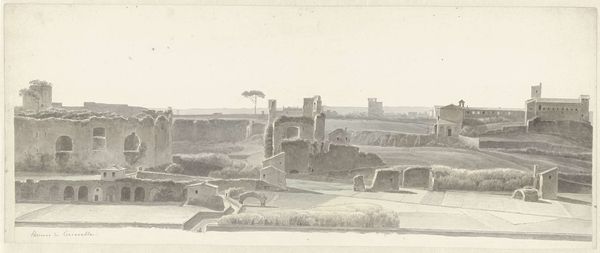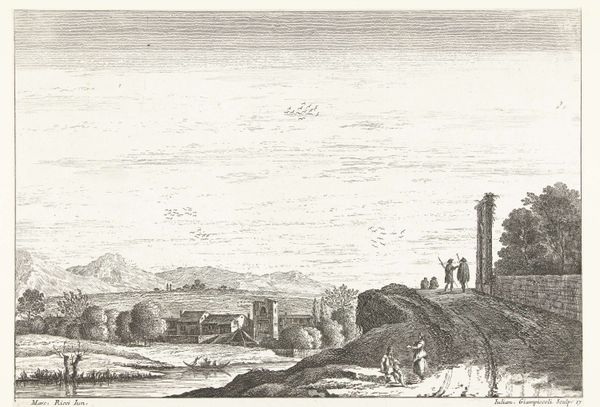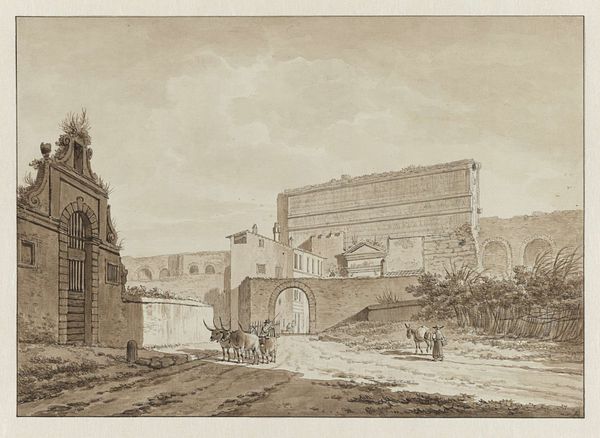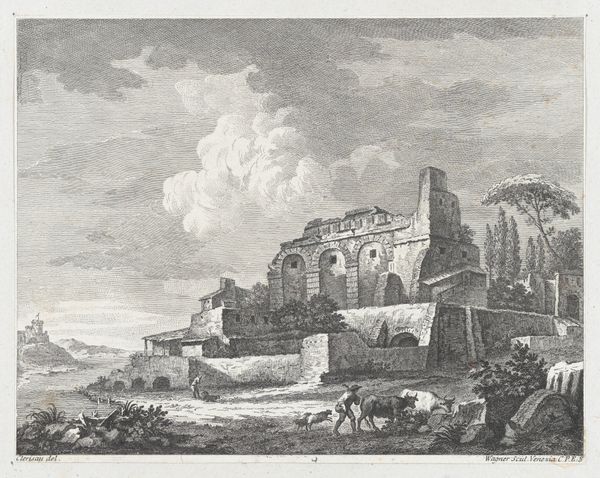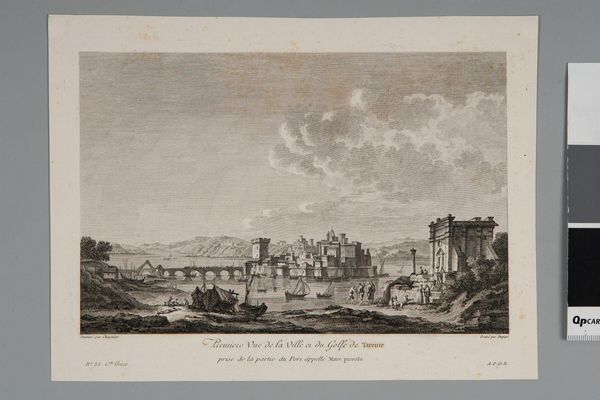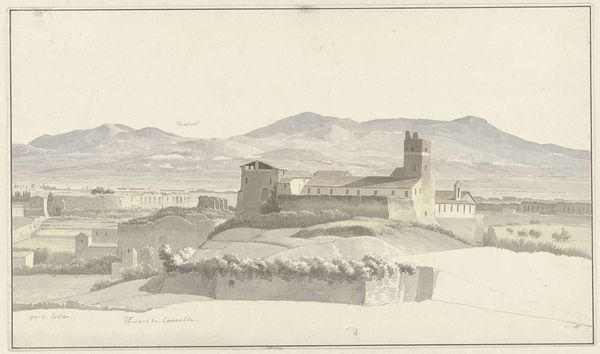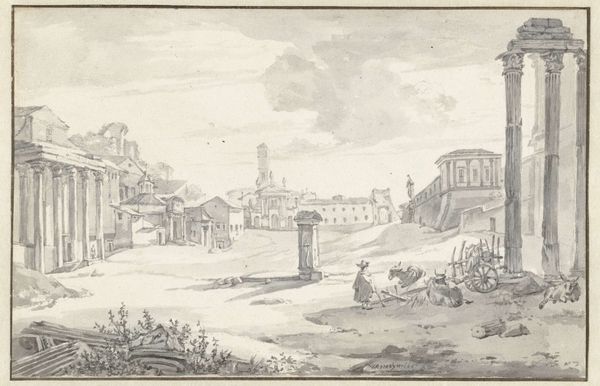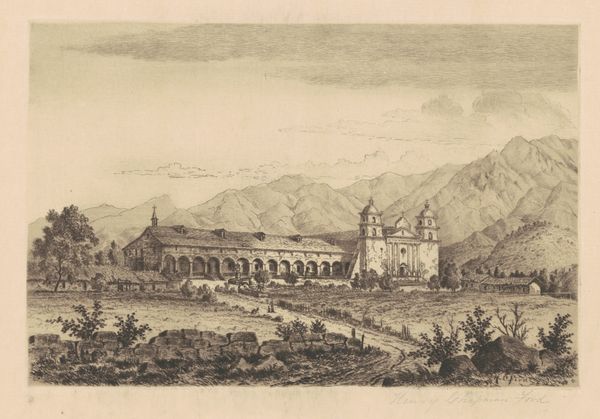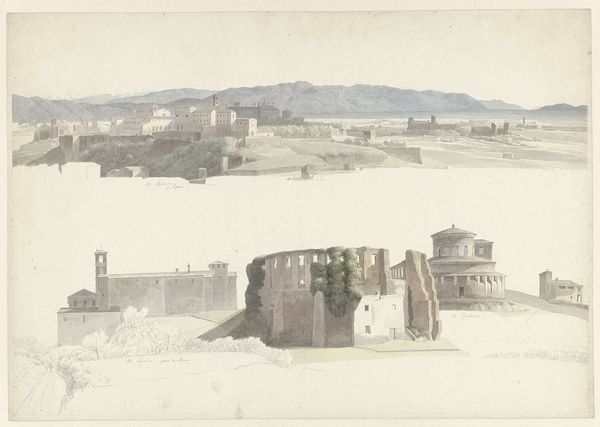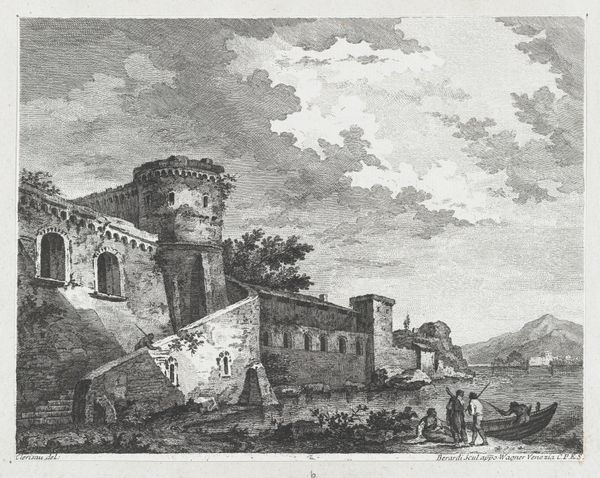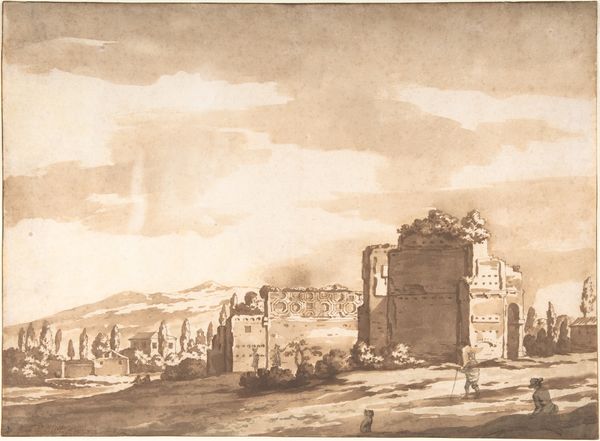
Dimensions: Image: 20 Ã 37.5 cm (7 7/8 Ã 14 3/4 in.) Sheet: 20.6 Ã 38 cm (8 1/8 Ã 14 15/16 in.)
Copyright: CC0 1.0
Curator: I am immediately struck by the etching's almost haunting stillness, despite the depiction of what appears to be a bustling temple complex. The light and shadow create such a dramatic sense of depth. Editor: Indeed. What we see before us is Louis Pierre Baltard's "Egyptian Temple," an etching that provides a fascinating glimpse into 19th-century European perceptions of ancient Egypt. Curator: I’m curious about the figures in the foreground, near what seems to be a fire. It makes me wonder about Baltard's own encounters and social position while creating this work. Editor: Precisely. Baltard, who lived from 1764 to 1846, was working within a context of European colonialism and burgeoning Egyptology. How did that shape not just what was depicted, but the labor and materials used? Curator: It’s a potent reminder that art isn’t created in a vacuum. The act of depiction, the very materials used, reflect the power structures of the time. Editor: Absolutely. It urges us to consider whose stories are told and whose are erased in the process of representing history. Curator: A lot to consider, beyond just the artistry. Editor: Agreed, and that's precisely why engaging with art like Baltard's is so vital.
Comments
No comments
Be the first to comment and join the conversation on the ultimate creative platform.
